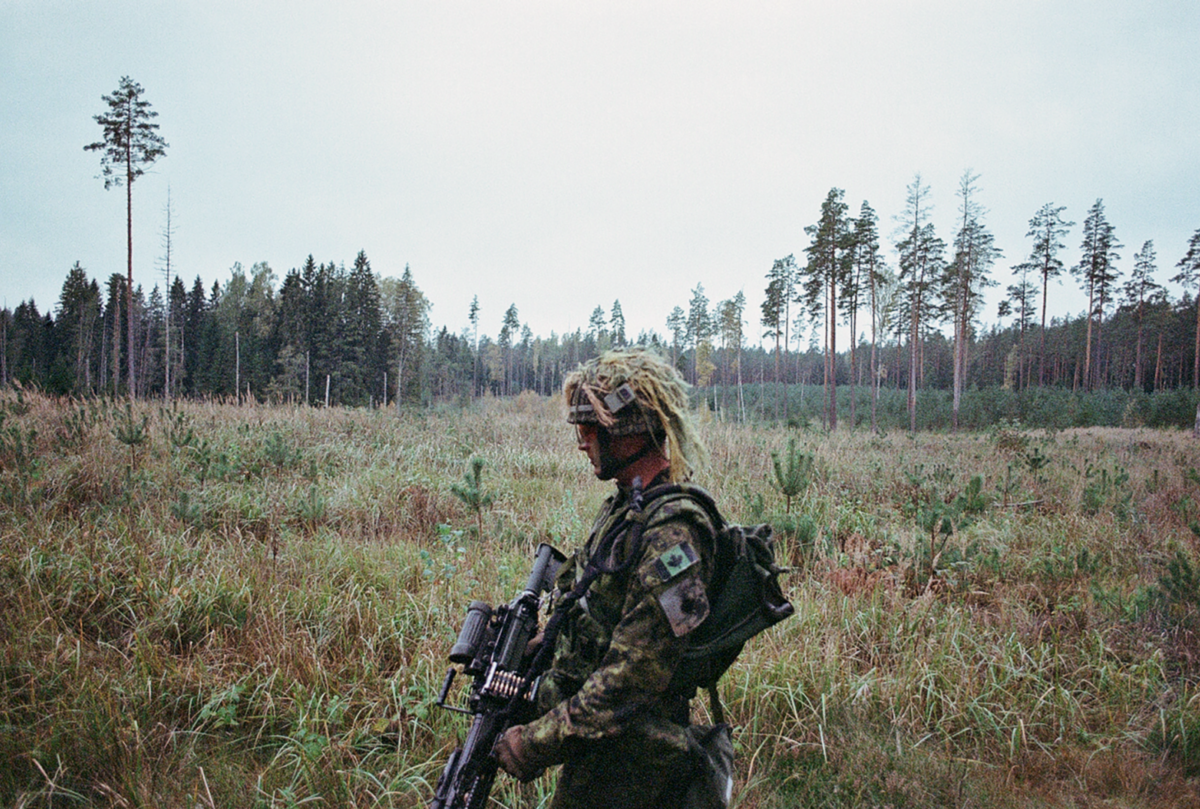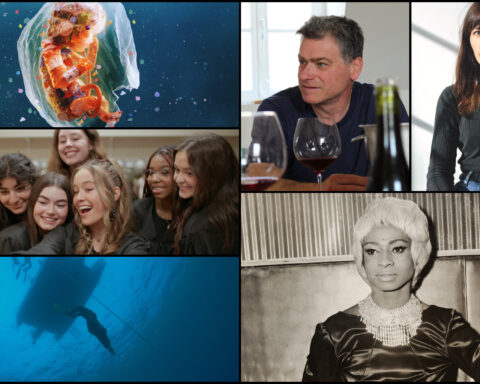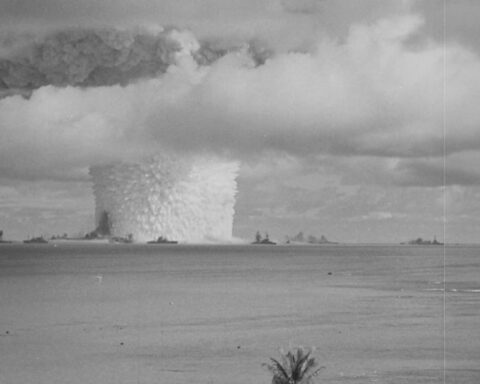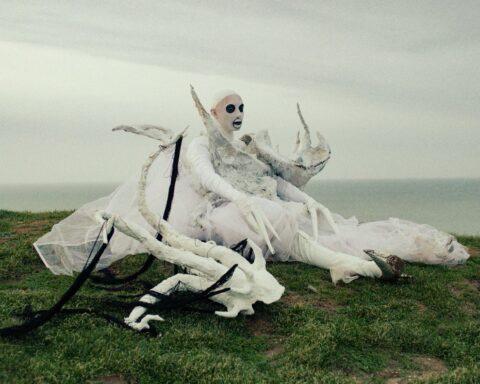From July to November 2018, I completed a photographic exploration along the Latvia–Russia border. As a Latvian-Canadian photographer, I was interested in NATO’s position in the Baltics. I was curious about day-to-day life in the border zone in both Latvia and Russia, especially in the formerly Latvian region Abrene (Jaunlatgale), which is now the Pytalovsky District in Russia. My mission was to travel the Latvia–Russia border by car from both sides and spend time with Canadian Armed Forces stationed in Latvia with NATO Enhanced Forward Presence.
Following Russia’s aggression in Ukraine in 2014, in 2016, NATO member nations agreed to deploy four multinational battalions to members most at risk of a Russian invasion. Enhanced Forward Presence is an allied deterrence mission in Estonia, Latvia, Lithuania and Poland. Canada leads the mission in Latvia, working with Albania, Czech Republic, Italy, Montenegro, Poland, Slovakia, Slovenia and Spain.
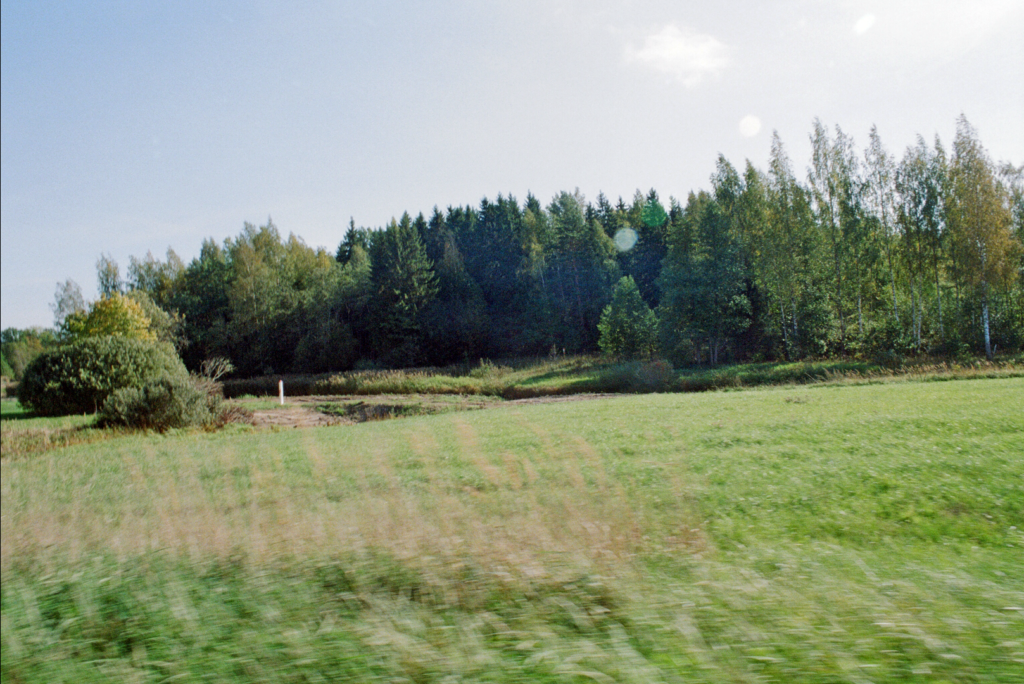
Its exact location is marked by white posts. September 2018 | Zile Liepins
When Crimea was annexed in 2014, the apprehension about something similar happening in other regions, including Latvia, was undeniable. Conversations with my Latvian friends and family led to contingency plans—even escape plans. In July 2018, my family was horrified that I wanted to approach the Russian border, let alone cross it. We had been reading an unsettling mix of real and fake news, and we wrongly assumed that NATO troops were stationed directly along the Russian border against an imminent invasion. Most people I spoke to instilled unease in me about entering Russia as a Canadian citizen without knowledge of Russian or a driver’s license. “You are going to roam the Russian border zone with a bunch of cameras? GOOD IDEA.”
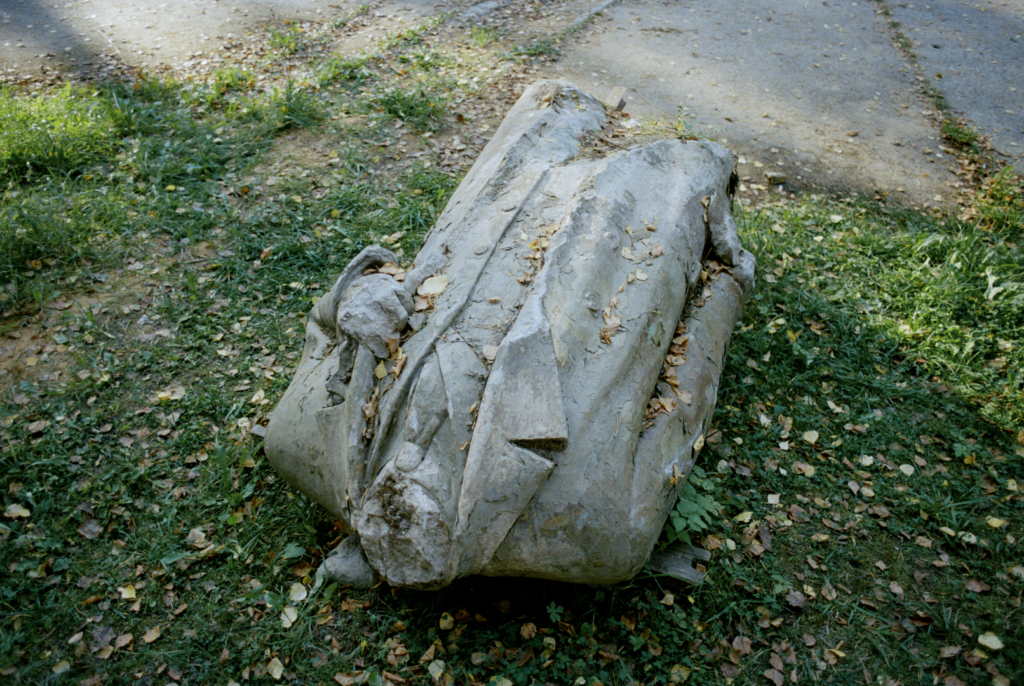
(approx. 70 km from the Russian Federation); September 2018 | Zile Liepins
I used my Latvian passport to obtain a visa for two separate weeklong trips in August and September. Two Latvians with Russian language skills, Ance and Miks, agreed to drive. Viļaka, a town ten kilometres from the Russian border, was our home base before departure and upon return. In August, Ance and I veered south to Moscow; in September, Miks and I headed north to St. Petersburg.
Both times, we lingered in Pytalovsky District. Abrene District became a part of Latvia following the Latvian–Soviet Peace Treaty of 1920, in which Soviet Russia recognized the independence of Latvia as inviolable. Abrene was annexed by the Russian Soviet Federative Socialist Republic in 1944 and renamed Pytalovsky; it was never returned to Latvia and was officially ceded to the Russian Federation in a border treaty in 2007. It has become a symbol of stolen identity often capitalized on by Latvian nationalists, but Latvian locals living near the border tell me there’s nothing to see there; even when the region was in Latvia, it was mostly populated by ethnic Russians and subject to Russification policies; I won’t find any romantic traces of Latvia lost. I remained compelled to see Abrene for myself.
I’ve reconstructed my working life during the period of my shoots in a diary style.
***
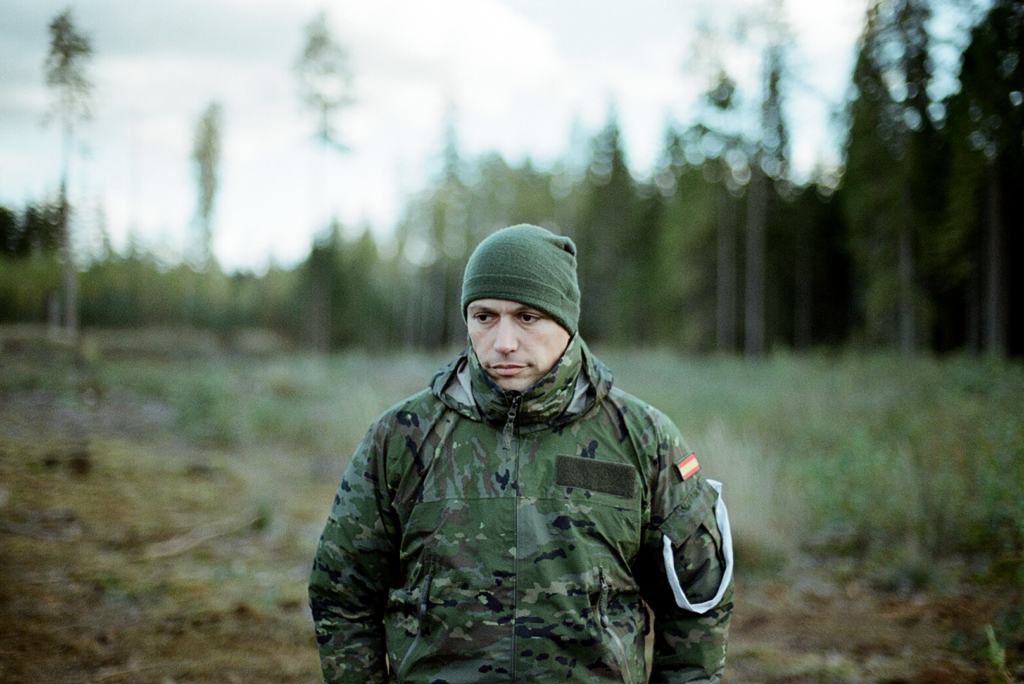
We are staying with acquaintances in Viļaka I met a year before. They warmly take us in a total of four times, despite our late arrivals, endless questions and muddy boots. Before crossing the border, we take a drive to find the old Vecumi train station, the last stop before the Russian Federation prior to the station’s closure in 2001.
We discover a small group of boarded-up buildings, the crumbling passenger platform and a straight line in the grass where the tracks used to be. We meet a few friendly dogs, but there are no people around; we explore freely and take pictures. We discuss possible uses for the raised path left by the railroad—a bike path perhaps? When we leave Viļaka, our host gathers smooth chestnuts from the ground and gives them to me for the anxiety of crossing the border. “Put these in your pocket. They always calm me down.”
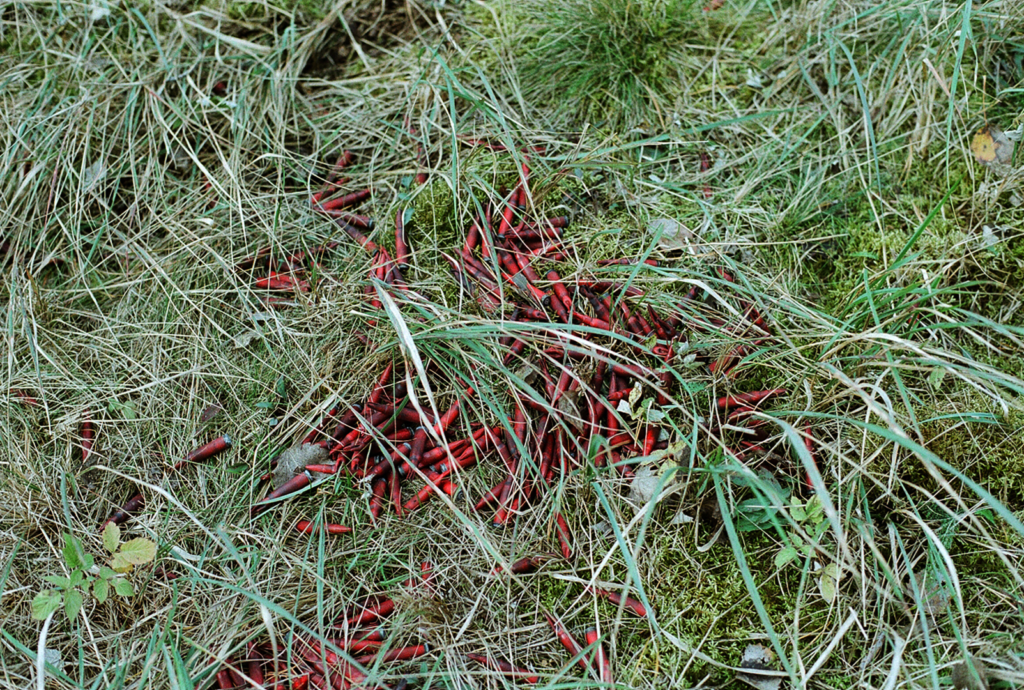
The small border-crossing near Viļaka is aptly called Vientuļi—Latvian for loneliness. I quickly learn that crossing the border by car without speaking Russian would likely be impossible. Thankfully, I have someone with me who does, but it’s still stressful and confusing. Behind us a man taunts, “Are you complete losers? Learn how to cross the border!”
First things first. I want to see the Russian side of the retired railway, the station after Vecumi: Nosova. We follow the tracks, but don’t see the station. I get out of the car and take a picture of a Russian flag while Miks asks a woman working in her garden for information. Suddenly he yells to me, “Don’t take pictures and get back in the car.” The woman cheerfully lets him know that we are in a patrolled border zone and shouldn’t stop the car. The train station we are looking for is just around the bend, but approaching it is not a consideration. A family lives there, maintaining the station for possible future use. The tracks have been pulled up and stored to prevent theft, but “say the word, and we’re ready to go.”
I am travelling with my grandfather’s 1940 road map of Latvia, which includes Abrene—now Pytalovsky District. It allows us to pinpoint the exact locations of extinct Latvian towns and train stations. Passing through the Russian towns while speaking their past names feels like conjuring ghosts: Purvmala, Linava, Kacēni, Gauri, Augšpils, Rītupe. (Now Nosova, Linovo, Kachanovo, Gavry, Vyshgorodok, Utroya.)
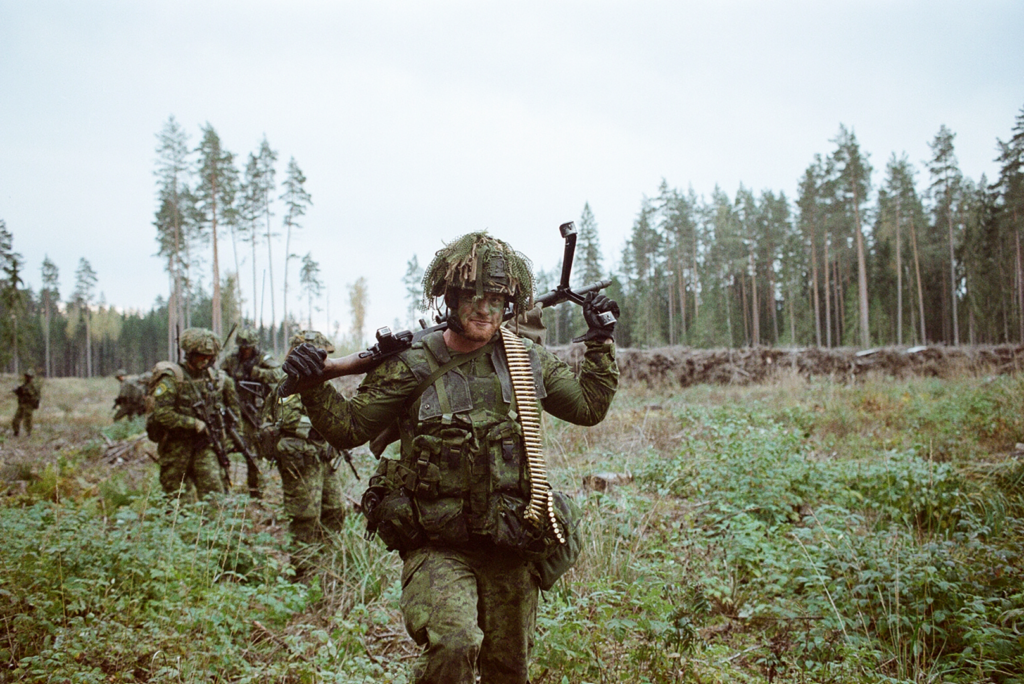
In Pytalovo, the capital of the old Abrene district, it is unnervingly sunny. Unlike the natural tones favoured on the other side of the border, the raw blue and turquoise buildings, bus stops, orthodox crosses, fences and public telephones are electric. Miks is delighted to see cars and buses he hasn’t seen since childhood. The businesses look closed (they don’t have windows and keep the lights off) but we cross paths with playful children, cheerful young women on their way somewhere, construction workers and boys playing soccer.
On Friday night we are the only customers in the one bar, Kafe-Bar Versailles. In the museum, we see our history from the other side in a Communist propaganda style: the Abrene years are called the “Bourgeoisie Years,” when European capitalists occupied Pytalovsky District until it was liberated by the Soviets. The ceilings feature Soviet-era murals of women in Latvian folk costumes working in wheat fields and Red Army soldiers waving the hammer and sickle. Within an hour of entering Russian Federation, I’ve seen the first of many Lenin monuments. In most parts of the former Soviet Union, they were demolished promptly and with celebration in the 1990s. In today’s Russian Federation they are not only preserved but restored, keeping watch over busy city centres. I see Soviet flags outside of homes and the black-and-orange Georgian ribbon—a Russian military symbol initially representing patriotism, now expressing support for the Russian government and reborn military aggression, especially during the war in Ukraine—on lapels and tied to rear-view mirrors and trees. In Moscow, I stop to check my location and am surprised to find that I am on Sovetskaya Ulitsa (Soviet Street). At the VDNKh (Exhibition of Achievements of National Economy), tourists pose with an enormous looming Lenin framed by a circle of the gleaming gold insignias of the former soviet republics. I hadn’t seen “Latvian Soviet Socialist Republic” outside of history books or museums in decades. “Doesn’t look like they’re getting ready to forget over here,” Ance remarks.
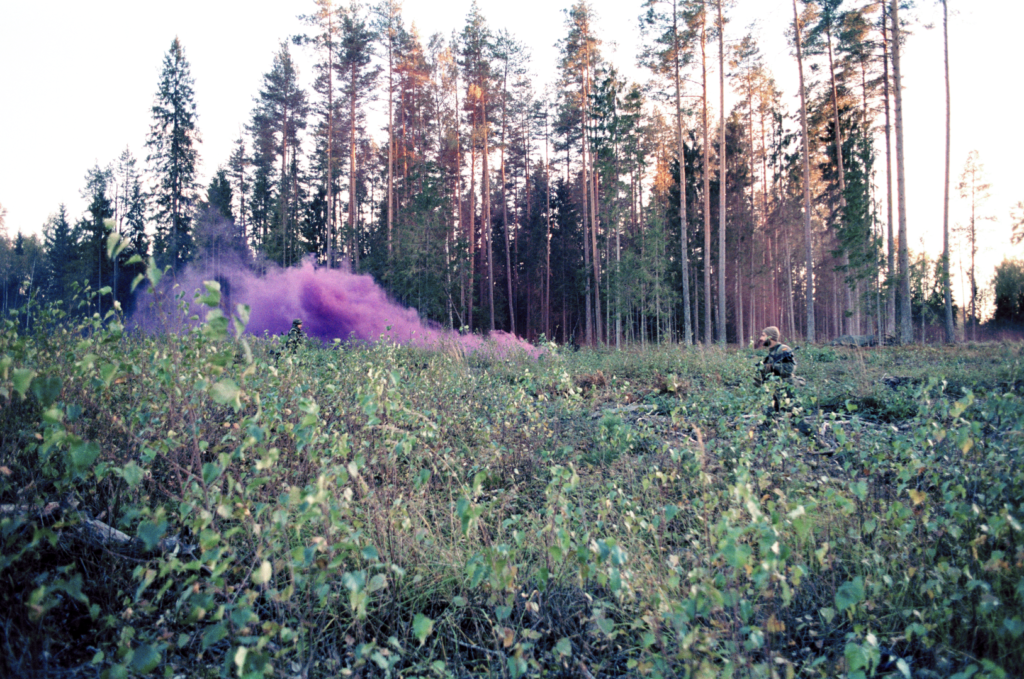
I never felt in personal danger during my time in Russia. People were warm and friendly, amused by our naïve explorations. Any fear I’d been fed about my Canadian citizenship and six cameras seemed unfounded. The Russian Federation is a giant, and it doesn’t care about me. The threat I felt was in the constant reminder of Russian military strength—foreboding reminders of the past. Everywhere I looked, I saw a different version of history, one which highlights the Soviet Union’s role in obliterating the Nazis but ignores what came next: the occupation of the countries they’d just “liberated” to go on to execute, deport and torture hundreds of thousands, destroying millions of lives. Knowing this history makes seeing the hammer and sickle as nauseating as seeing the swastika. Soviet nostalgia isn’t relegated to the past here. On an average outing to the grocery store, Lenin salutes me, a bumper sticker warns “And we’d do it again,” a poster declares “No one can take away our history.” Everything seems to whisper: “And we’d do it again.”
In October, having gained insight into the Russian psyche, I join the Canadian Armed Forces with NATO during training, community outreach, and team-building activities. While based in Daugavpils to join NATO at Latvia’s Army Meža Mackeviči military base, I stay with my Russian-speaking relatives. They question who is provoking whom. They believe that Russia has done nothing to require NATO’s presence here, and that unrest in Ukraine is a myth. In these parts, people generally watch Russian state-controlled television, which informs their worldview. My relatives tell me that RT, BBC and Latvian channels broadcast identical images with opposing messages. Despite our differences, every morning they make me breakfast, pack me a lunch and cheerfully drive me to the military base.
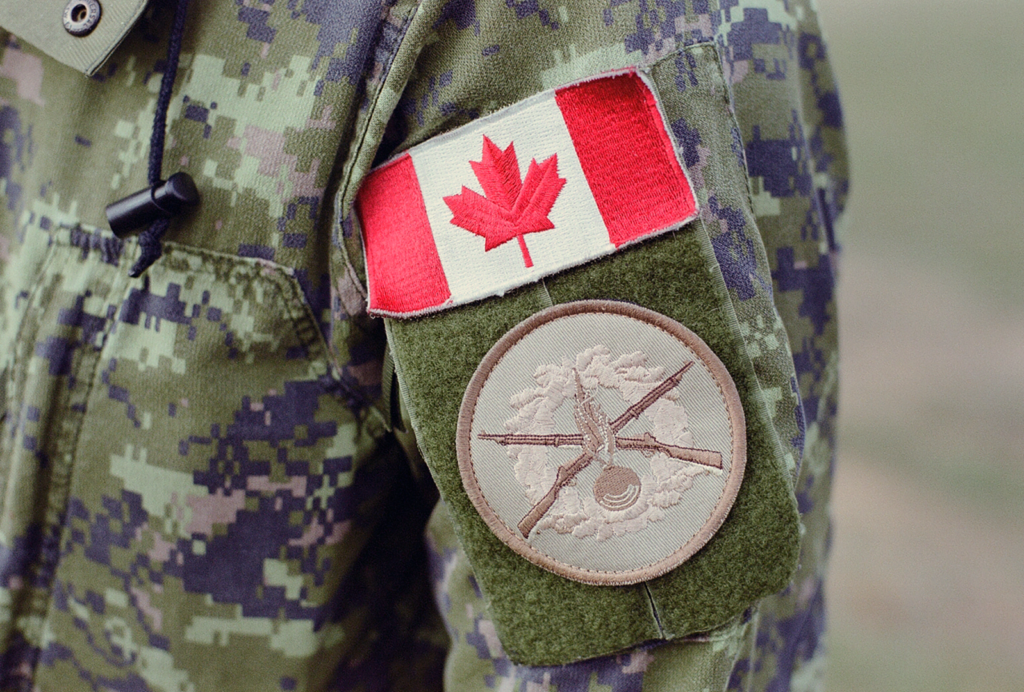
My time alongside the Canadian Armed Forces was a blur of intense experiences. I ran through quintessential Latvian birch forests under rainbows of smoke bombs surrounded by the sound of gunfire and men screaming at the top of their voices with the urgency of real battle. I crouched behind trees as international helicopters descended from above. I felt at once secure and unsettled as soldiers marched in a neat row through the cozy pine forests I associate with long summers and mushroom gathering.
Every now and then, our forces give me encouraging smiles, letting me know that they see me and I’m safe. I zero in on the block letters on their identical uniforms: PAY, BRISTOWE, MACBETH, BRAVO, LOMAX, PENMAN. As we talk, I’m able to separate the individual from the military body. They are friendly, open, intelligent and curious about the region they are here to protect.
At the international tank games, I forget to flinch when the Commanding Lieutenant-Colonel arrives carrying a red Tim Hortons’ paper coffee cup. We are perched on Soviet-built concrete military structures looking out over an expansive clearing, waiting for friendly games between European allies to commence. As I get the signal to put in my earplugs I remember that we are very close to populated areas, Ādaži and Kadaga, just next to Latvia’s capital, Riga. While this exercise may be part of a welcome defence mission, an elderly person will have experienced the Russian empire, three revolutions, civil war, war of independence, independence, Soviet occupation, Nazi occupation, Soviet occupation again, independence again and finally the European Union. Now the tanks have rolled in once more and are making noise.
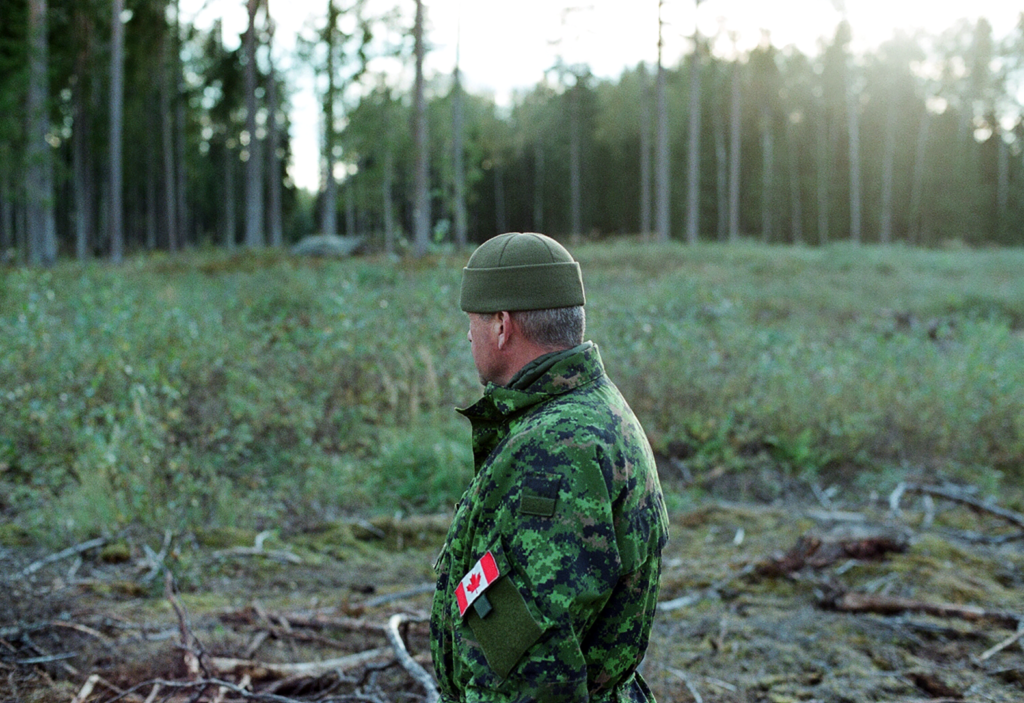
At an outreach activity in a children’s shelter, a soldier paints my face with heavy army issue face-paint in blotches of green, brown and black. It’s a sunny fall day and the kids don’t tire of playing ball with the troops, testing out various weapons (which many of them surprisingly already know how to handle) and climbing into tanks and light-armoured vehicles. We are in the predominately Russian speaking city of Daugavpils, 150 kilometres from the border, and I only hear Russian from the children and staff. Far from Russia–NATO tension on the personal scale, the kids playfully try to prevent the troops from leaving, and one officer tells me, “Days like today are why I’m a soldier.”
On October 31, 2018, it’s time to come home to Canada. Justin Trudeau has extended Canada’s mission with NATO in Latvia until 2023. Egils Levits, a member of the European court of justice, was elected president of Latvia in June 2019. When people ask me if I think NATO’s Enhanced Forward Presence mission in Latvia is working, I say, “I haven’t heard anyone make an escape plan in years.”
***
With thanks: Ontario Arts Council, Canadian Armed Forces & NATO Enhanced Forward Presence Battlegroup Latvia, Ance, Miks, Skaidrīte, Albīne.




